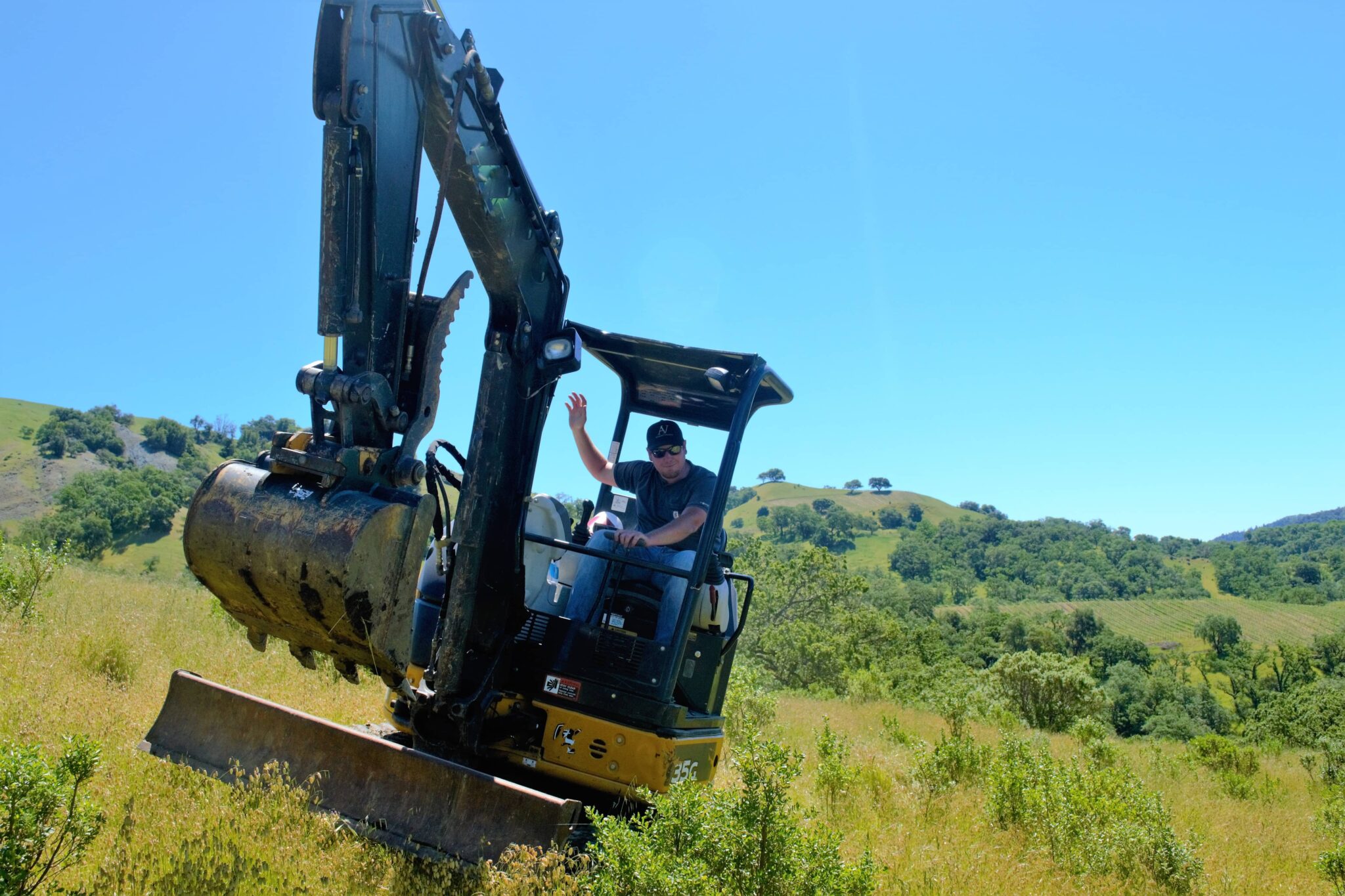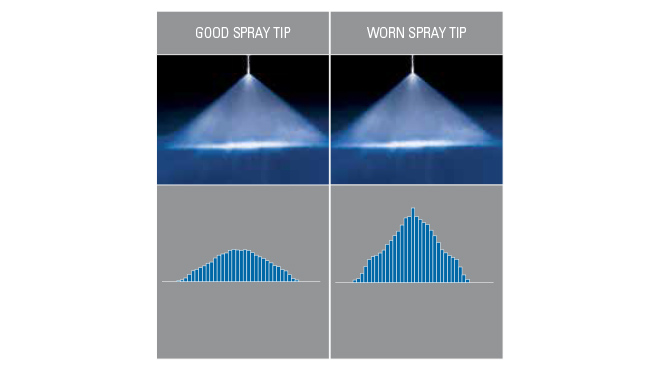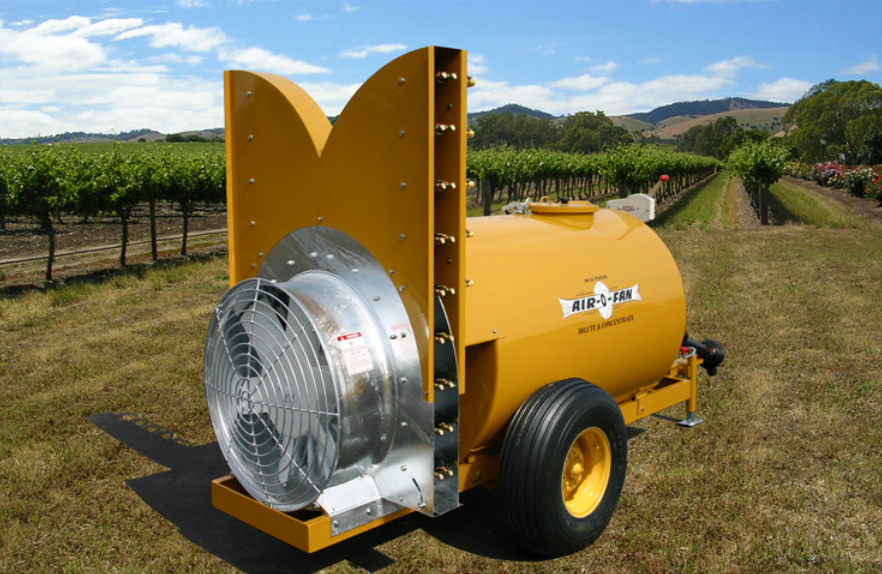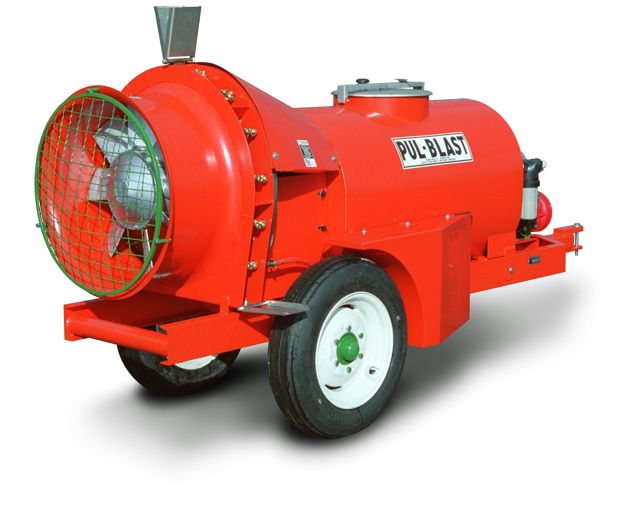The Practical Side of Spraying
A conversation with Alec Roser, VP of Vineyard Operations
I’m a nerd. I know a little bit about sprayers, but mostly from an academic standpoint. I’ve never done maintenance on them, never operated one, etc. So, I’m enlisting the opinion of my colleague, Alec Roser, to give our readers some practical information on the use of sprayers in vineyards.
Alec is going on 21 years in his career in viticulture and has seen and done a lot in this business. We think his expertise in spraying and managing spray programs is excellent and wanted to share some of his insight with you. This is such an important aspect of grape growing and I think people need to at least know what the basics are.

What are some common mistakes when it comes to spraying?
A lot of it I’ve found is about educating the applicators. There are mistakes with reading work orders or product labels or not understanding the difference between dry ounces (weight) or wet ounces (volume). In order to keep that from causing problems, we (the managers) do all the calibrations for the operators. They’re only allowed to adjust the PSI up or down by 15 PSI if they need to, in order to get the calibration as close as possible. Otherwise, if there are problems, they’re supposed to call their supervisor. The most mistakes we see are due to user/operator error, so keeping on top of calibrations ourselves minimizes that risk.
Adjusting the PSI (pressure) changes the amount you’re spraying, I assume?
Yes, adjusting PSI is either going to increase or decrease the amount that’s coming out of that sprayer. So, if the operator is noticing that the calibration is a little bit off on a per-acre basis by like ten gallons, they can adjust the PSI to increase or decrease the outflow. That way they get as close to the recommendation as possible.
Pardon my ignorance, but how do they know if they’re over or under?
Each of our sprayers has a sight tube on it so they can look back and see how much of the spray they’ve used. Most of our sprayers are 150 gallons capacity. So, if they know they’re supposed to apply 50 gallons per acre, they know more or less where the acre breaks are. Then they determine if an acre of vineyard received that 50 gallons or not and adjust plus or minus to get as close to that 50 gallons as they can.
I usually try and get it perfect within the first acre. The work orders we write list acreage of each block and how many gallons should be use in that block. That way they can check as they proceed with their spraying.
How do you calibrate a sprayer? What protocols do you use?
There is an easy answer and there is a hard answer.
The easy answer is we have a formula that we use. It gives us our gallons per minute per side (of the sprayer). Then I take that and look on a chart and take those gallons per minute per side given the amount of pressure that I want to run, which is usually between 100 and 120 PSI. And then that specifies the correct disks, disk cores cores and our nozzle bodies that we should use to achieve that. Its based on orifice size and desired droplet size. It’s all based gallons per acre, tractor speed and row spacing.
The hard way is you go out and actually measure one hundred feet and time how long it takes to travel that 100 feet and see how many gallons used and adjust accordingly. This is really a cross-check of our settings based on our equation, from which we usually get within five gallons per acre.
For the sprayer test, we use water and take the output of all of the nozzles and run it for like five minutes and you test how many ounces or gallons come out of them. And try and compute that per minute.
Theoretically you should do that testing on an annual basis, but with our calibration equation and then just being able to see how many gallons per acre you’re using, we always get within a tight range of where we’re supposed to be. So it’s no big deal if don’t we don’t spend the extra time to do the actual sprayer test.

Is there any way to periodically check your sprayers efficacy? Or is it mainly checking on the per-acre output?
Yeah. And if they’re having issues with like adjusting the pressure and adjusting the tractor speed and it still isn’t working, that means there’s probably something wrong with the sprayer pump. On top of the pump there’s a gauge that reads head pressure, which is supposed to be 10 percent of operating pressure. So if we’re operating at 150 PSI, it should be about 15 PSI of head pressure. So we check that.
But the head pressure changes as the tank volume gets lower doesn’t it?
No, it’s constant. So, that way you have constant output no matter the gallons that are in the spray tank.
When people start getting their sprayers ready for the season, what are some general maintenance activities they should do and what typically gets overlooked or ignored?
We go through our sprayers on an annual basis. We change the belts on them because it’s not fun to change the belt at two o’clock in the morning when it breaks, trying to finish the spray. We change all the belts every year regardless of their condition.
We change all the pump oil. We drain the pumps out, change the oil, and change the gearbox fan oil and then lube the whole sprayer. We check our pressure gauges to make sure they’re operating correctly. Check all the hoses and make sure that they’re clean and not clogged or have any nicks or breaks. If there are any hoses that appear to be worn, we change them right away because eventually they’re going to wear out and break open.
A major point that can be overlooked is not changing the pump oil or watching the pump oil level. Or not paying attention to the color of the oil. Discolored oil usually means there’s water getting mixed in with the oil, which can indicate that the seals inside the pumps are bad. Lastly, we also change the oil in the fan gearbox, which is important. I think a lot of people overlook some or all of this. But for us, we do it on an annual basis.

OK, what about nozzles? When I was in college, they stressed the upkeep of nozzles and prevention of clogging. Do you find that nozzles typically get clogged or is that a big deal?
Yeah, nozzles can clog if you don’t clean your sprayer from spray to spray and it depends on what you put it in. Solid materials have a higher probability of clogging nozzles and the way we try to avoid that is by pre-mixing them before it goes in the tank. Premixing them in a bucket, if the label allows. So it’s already in a liquid solution or suspension. It then goes into the spray tank and then the spray tank agitator keeps insoluble solids suspended.
You just have a separate tank for that?
Usually just five gallon bucket. And we pre-mix only a couple of pounds at a time.
But solid, suspended materials like sulfur and serenade are kind of abrasive materials, so over time they can wear out the spray tips to the point where the size of the orifice is no longer accurate. I wouldn’t say we change our spray tips every spray, but they do change with every spray based on the calibration. And throughout the season we’ll probably rotate all of our spray tips out two or three times.
Do you just clean them or just toss them out and get new ones? They’re not that expensive, right?
They are. But we replace them regardless. Every spray season for us we probably go through $1,000 to $1,500 worth of disk cores and spray tips. Yeah, not cheap.

What do you think is the best sprayer for a VSP trellis?
Well, we only run Air blast sprayers, Rears Pack Blast and Rears Pull Blast. And I prefer to have the vineyard tower on them over the orchard tower. So it’s more of a vertical arrangement of nozzles. On the other hand, with the orchard configuration nozzles are arranged in a circular configuration around the sprayer and you’re spraying up in the canopies. But for vineyards, it is better to have a vertical arrangement of nozzles that spray outward only toward the vine canopies.
So we’re spraying top to bottom of the back of the canopy. And that way we can change nozzle sizes based on fruit zone versus upper canopy so that we’re concentrating more spray on the fruit zone and than on the upper canopy and it just gets more of an even spray.
Does that work just as well for like a split canopy and for sprawl as well, or do you change things for those trellis types?
Our towers have eight nozzles on each side. So it’s not the most ideal for sprawl canopies, but we make it work because we just use the lower positions and point them upward. That way they go up underneath the canopy.
So for sprawl, what would be the best of the best for that?
You’d want to use more like an Orchard Sprayer or even if you have the ability to have there’s an attachment on the bottom of the Rears where you can have two nozzles that come outside the sprayer and they point directly up. So it gets all up into the canopy.
Is this is the same for horizontally split canopy? What would you normally use for the ideal situation?
The vineyard towers. Same thing.

What are some of the worst mistakes you’ve seen? If you could give some examples.
We’re not guilty of it, but I’ve seen people that either don’t clean their spray tanks between herbicide and fungicide sprays. They’re using this same tank either as a mix tank or just grabbing the wrong jugs out of the chemical shed and putting herbicides out on a fungicide spray and just completely smoking vineyards. Or not waiting long enough between sulfur and oil, which will burn leaves especially in warm weather. Spraying too late in the day can burn leaves also. So, watch what is applied during hot days.
Those things do happen and I’ve seen it happen. We haven’t had any really bad issues with, with phytotoxicity, but we’ve had issues with spotting and burning on hot days when we’ve sprayed too late in the day. But nothing major, fortunately.
Anything else people should know about sprayers? Any advice for our readership?
The best thing I tell our guys is don’t set it and forget about it. Constantly monitor it. Just because it’s saying that you’re running at 50 gallons per acre when you start doesn’t mean that’s what you’re running at the end. You know, conditions change. You get tired, you slow down, you’re not running at the same R.P.M. So keep vigilant and stay as close to the work order specification as possible.
And also, I think guys tend to forget to let their managers know if they’re running low on materials. You’re supposed to do that the day before spraying instead of morning of. It’s hard for us to run materials out to the vineyards at 4:00 or 5:00 in the morning.
Well thank you so much for sitting down with me today, Alec
You’re very welcome
Photo citations
Air-o-fan – gb-38r reverse fan pto driven air-blast vineyard sprayer. (n.d.). Retrieved May 04, 2021, from https://airofan.com/VineyardSprayer/GB38R
Detecting nozzle wear. (n.d.). Retrieved May 04, 2021, from https://www.spray.com/resources/spraying-basics/spray-optimization/detecting-nozzle-wear
Tom Wolf (Nozzle_Guy “Water sensitive paper for assessing spray coverage”. Retrieved May 04, 2021, from https://sprayers101.com/wsp-coverage/
(main photo) Willcox, W. (2017, June 12). Here’s why your organic wine is actually really bad for the environment. Retrieved May 04, 2021, from https://vinepair.com/wine-blog/heres-why-your-organic-wine-is-actually-really-bad-for-the-environment/


